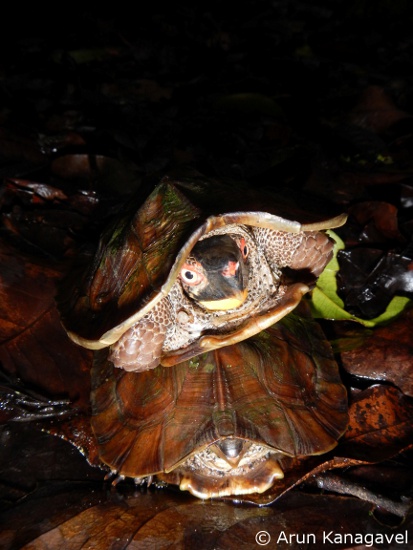
My name is Arun Kanagavel and I have been working in the Western Ghats Biodiversity Hotspot in India on herpetofauna and with local communities to integrate them into participatory forest management and conservation. After my Master’s course at the Durrell Institute of Conservation and Ecology, my first break into the field was through the Zoological Society of London’s (ZSL) Erasmus Barlow Expedition to understand the population and threats to the threatened rainforest-dwelling chelonians of the Western Ghats – the Cochin Forest Cane Turtle and Travancore Tortoise. Extremely cryptic, these species were immensely difficult to detect and it took us three months to find our first cane turtle.
Three years later, and it feels really good to be back working with ZSL through the EDGE Fellowship. There has been an immense recent buzz in amphibian research in India due to the efforts of numerous researchers which has resulted in the discovery of numerous amphibian species and improving critical taxonomical aspects. The subsequent outreach beyond the academic community has resulted in improved awareness towards amphibian conservation and has generated an increased interest in watching and documenting them.

After a record 11 months to get the permits, I set off late May 2013 to search for the species at the Anamalai Tiger Reserve in the south Indian state of Tamil Nadu in the Western Ghats where the species was described from. On the very first day of the trek, I came across a pair of cane turtles mating! Once another species becomes focal, I suppose the previous ones come out in plenty to pull off a good joke! The breeding season for amphibians as well had just begun and a few Indirana semipalamata and their characteristic tadpoles were seen. The tadpoles of the Indirana genus are characteristic in the sense that they do not occupy pools of water but instead are seen on tapering rocks with a slim layer of water and vegetation. It has been two months as of now and the toad-skinned frog has not yet been encountered during the surveys at the Anamalai Tiger Reserve. Hopefully the third month like in the case of chelonians would be a bit more fruitful.
